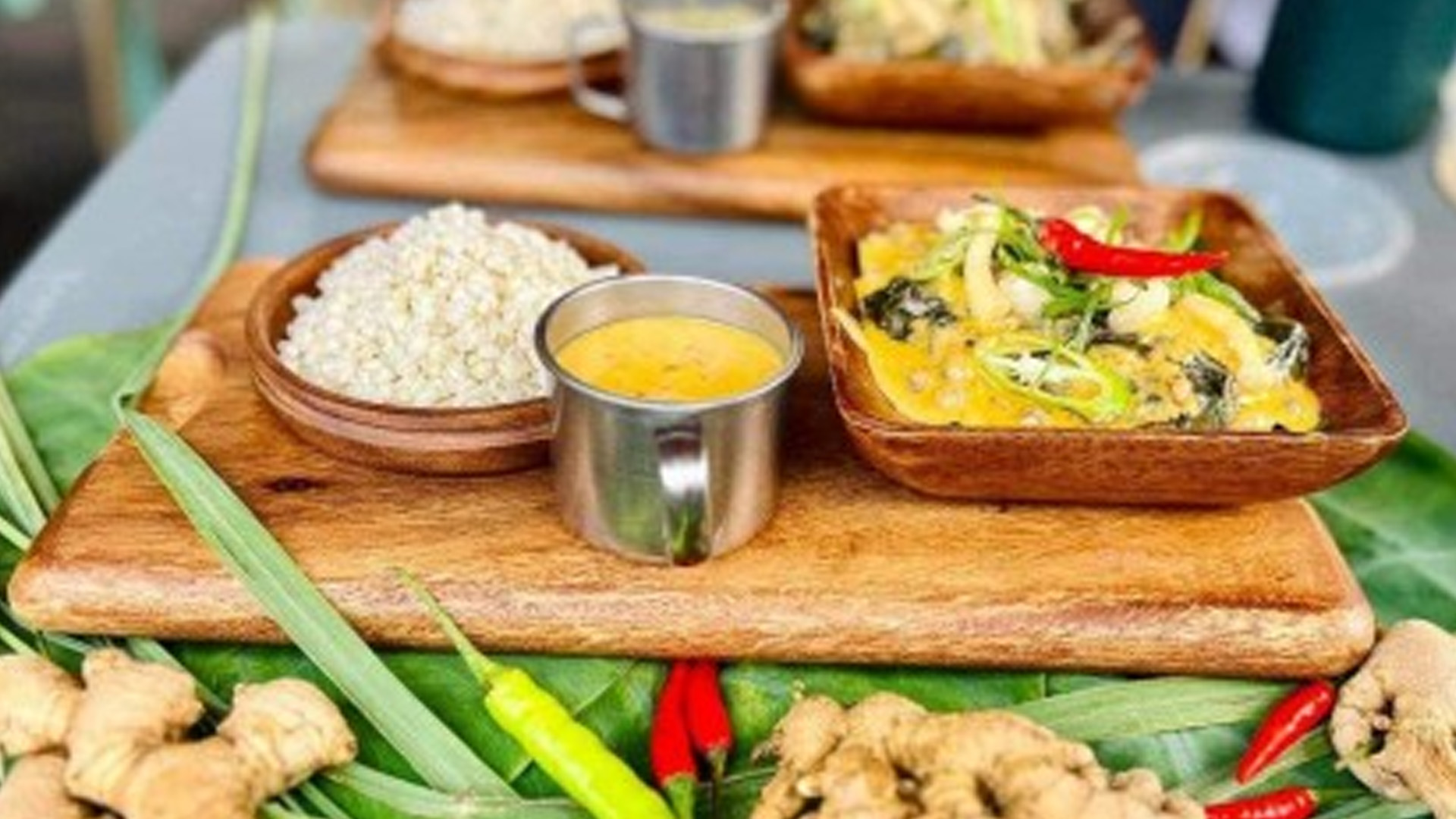Coconut milk and chili are at the heart of Bicolano cuisine, but if there is one place in the region that surely knows how to tickle taste buds using these key ingredients, it is Daraga town in Albay.
As part of this year’s Cagsawa Festival, five cooks from all over the region went head-to-head in their quest to serve the best dish that captures the rich history, culture, and tradition of this town at the Cagsawa Ruins on Saturday.
Against the backdrop of the majestic Mayon Volcano, amateur and professional culinary experts wielded their magic as they infused innovative twists to elevate traditional recipes.
Here are the top three gastronomic delights that made the cut in this savory spectacle.
1. Pinangat with a modern flair
John Pestin’s “Manok sa Ibalon,” at first glance, may seem like the ordinary pinangat, the savory signature specialty in Bicol made from taro leaves, chili, and meat stewed in coconut milk and tied with coconut leaves.
But there is more to this dish than meets the eye.
To level up the humble pinangat, Pestin used chicken breast as a substitute for the usual morsels of dried fish and pork meat found in most traditional recipes, then added mushrooms, chili, macapuno, pili nuts, and other spices.
He then stewed the pinangat in coconut milk, tapioca sauce, and crab paste to give the dish a unique umami taste. He also paired it with Adlai rice, a local grain known for its subtle and chewy texture, which is gradually becoming a rice substitute for people with diabetes.
The result? A savory feast for the taste buds, which was described as “innovative, insightful,” and a product of “modern techniques” by one of the judges, renowned local chef Jesse Uy.
2. Bicolano-Italian fusion
Rey Mallorca’s “Cagsawa Pasta” is an edible work of art that showcases the iconic Cagsawa Ruins in all its splendor.
The visual spectacle features a mound of al dente spaghetti bathed in laing sauce and arranged masterfully to resemble the Mayon Volcano. At the crater’s edge, coconut milk foam rose, mirroring plumes of smoke, while red chili sauce cascades down the sides like the fiery molten lava.
Squid meat balls, cooked in their natural ink, were strategically placed on the plate to depict the dark boulders surrounding the ruins. A tuile, a thin wafer cookie shaped like the Cagsawa belfry, completed the look.
Mallorca’s Italian pasta met Bicolano laing, which packs layers of flavor and texture, is a sight to behold. No wonder, this fancy-looking dish could only come from a creative genius who can turn an ordinary-looking plate into an edible canvas worthy of public attention.
3. Picadillo with a twist
Juanita Llaguno’s “Chicken Picadillo” warms both body and soul. Its charm lies in its simplicity and in its ability to transport people back to moments spent around the family table.
“In Daraga, picadillo is commonly prepared using fish, but I’ve put my own twist on this dish by replacing it with chicken,” Llaguno said in the vernacular.
For her specialty, she delicately wrapped the slabs of chicken in pechay leaves, gently simmering them in luscious coconut milk sauce. She then added garlic, onions, tomato, ginger, and chili to infuse the stew with that distinct blend of flavor.
“My dish is for the masses,” she proudly said.
Food and cultural identity
Recognizing that food is an important identity marker, this year’s Bikol’s Best Fest: Cagsawa Cooking Competition aimed to showcase the rich culinary heritage of the town and discover dishes that are distinctively Daragueño.
“We want the world to know that, aside from Cagsawa Ruins, we also have a vibrant culinary culture. Our food is one way to introduce ourselves as a people because it reflects our history, culture, traditions, and values,” Daraga Mayor Carlwyn Baldo said. (PNA)







